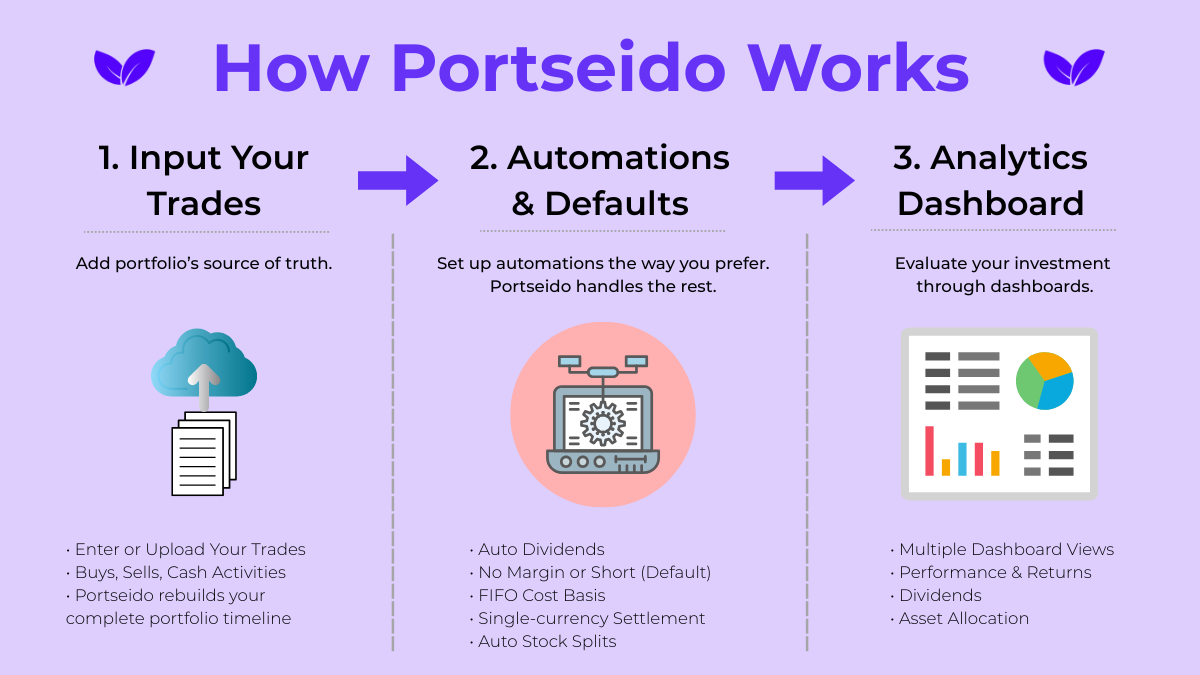How Portseido Works — A High-Level Overview
Portseido transforms your raw transaction history into a clear, consistent timeline of portfolio events. It then uses this timeline to calculate your performance, income, asset allocation, and other analytics.
This article provides a high-level overview of Portseido's core logic. You can explore more detailed topics in the linked articles below.

1) Everything Starts from Your Transactions
When you upload or enter trades, Portseido doesn’t just record them — it reconstructs what would happen in a real brokerage account.
For example:
- Buy → cash decreases, shares increase
- Sell → cash increases, shares decrease
- Fees, splits, and transfers → incorporated as events in your timeline
All analytics in Portseido are built from this simulated “lifecycle” of your portfolio.
2) Automations and Default Assumptions
Before running analytics, Portseido converts your raw data into Adjusted Transactions. This step applies automation and modeling rules to make your timeline complete and realistic.
By default:
A) Dividends Added Automatically
You don’t need to enter dividends manually (though you can).
Portseido adds dividend transactions automatically based on your holdings.
You can turn this off at any time. Read more here.
B) No Margin or Short-Selling (Default)
By default, Portseido prevents negative balances.
If a transaction would make cash negative, an automatic deposit is added to bring it back to zero.
Margin and short-selling can be enabled. Read more here
C) FIFO for Cost Basis
The First-In-First-Out (FIFO) method is used for gain/loss and cost calculations.
Other methods can be selected if preferred. Read more here
D) Single-Currency Settlement (Default)
All transactions settle in your portfolio’s main currency using the spot exchange rate at the time.
A multi-currency mode is also available. Read more here
3) Computing the Analytics
Once Adjusted Transactions are finalized, Portseido calculates and visualizes your portfolio data in an intuitive dashboard.
These results reflect both your entered transactions and the automation settings you’ve chosen.